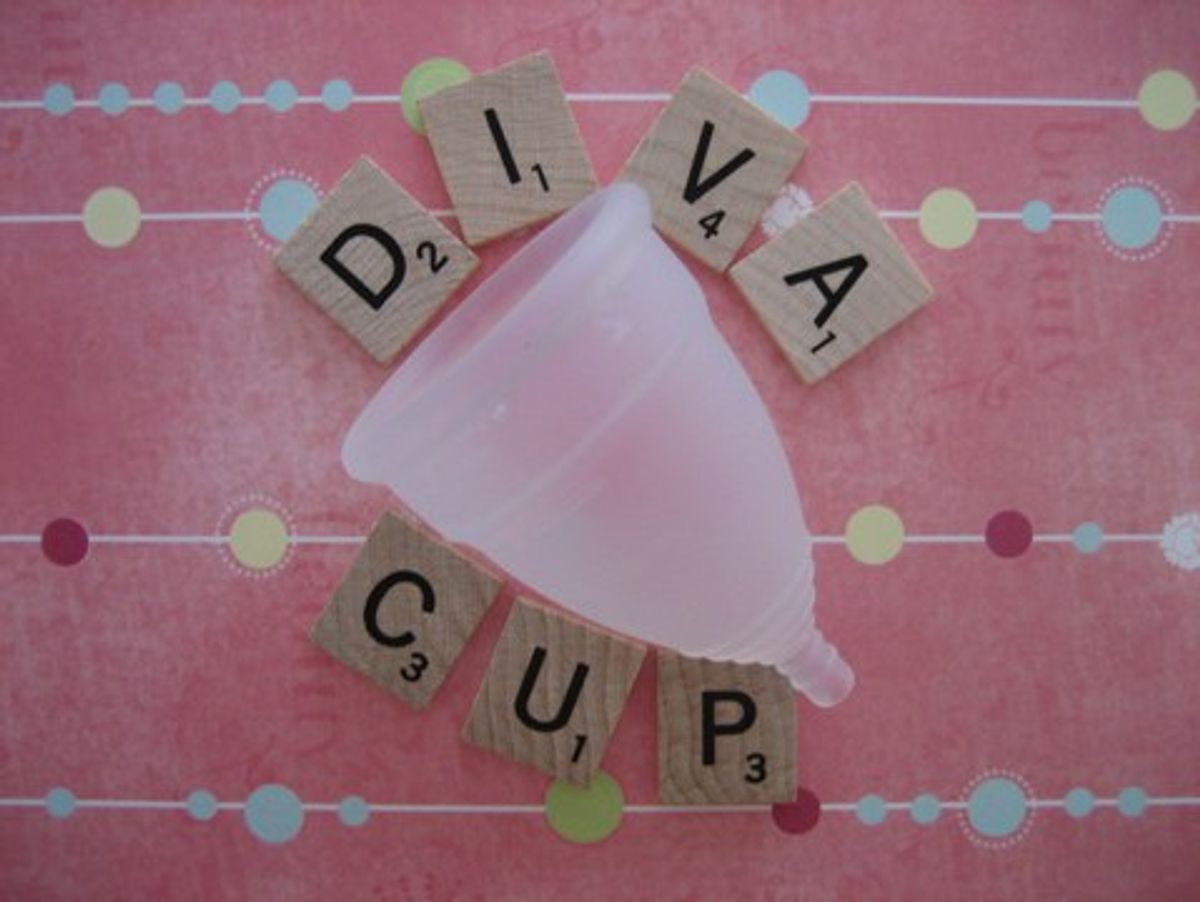I’m not going to sugar coat this: I am in love with my Diva Cup.
Before I begin, I am not being paid to promote this specific brand of menstrual cup. Also, I am also a big believer in not telling women how to be women and how to treat their bodies in any way. (You do you, ladies!) There is a multitude of different sizes, varieties, brands and companies for menstrual cups and there is no “one size fits all.” My experience is going to be very different than anyone else’s. Every woman and every vagina has their own unique needs, amiright?
My own experience just so happens to be with the Diva Cup. For those who need a briefing: a menstrual cup is a silicon, bell-shaped, flexible “cup” that is worn inside the lower vaginal canal during menstruation. It could sound scary, I know, but hear me out. There has been an incredible number of articles and personal stories written about menstrual cups, many that have bashed the idea and were closed-off to the lifestyle change. Women around the country and around the world are giving alternatives to tampons and pads an honest try, which is something to celebrate. Despite the amount of media attention, these silicon period-lifesavers have had recently, they are still far from being normalized. And that is what needs to change.
First of all, you are helping the environment while also helping your vagina.
If you are a woman reading this article right now, every tampon or pad you have ever used it still intact, breaking down in a landfill somewhere. Just the plastic applicators and packaging can take approximately 450 years to decompose in the environment. Worldwide, tampons are used by over 100 million women, and the average woman uses roughly 11,000 tampons in her lifetime, all while patronizing a multi-billion dollar industry. Since menstrual cups are reusable for at least a year, making the switch saves the planet a significant amount of pollution, while also posing fewer health risks. Major feminine care companies are not legally obligated to disclose ingredients lurking in tampons and pads, including exposure to dioxins, pesticides, bleach and chemical fragrances. Menstrual cups are made out of medical grade silicon, making it safe even for people with latex allergies. (The Diva Cup’s website says that while it is possible to develop sensitivities, having a reaction is very rare.) Unlike disposable pads and tampons, most (if not all) cups do not contain plastic, PVC, acrylic, acrylate, BPA, phthalate, elastomer, polyethylene, and are free of dyes and fragrances.
Second, every woman should be comfortable touching their own body parts.
Menstrual cups play a subtle, yet important role in the normalization of periods. “The best way to learn about your vaginal health is to actually look at your vagina. That’s right; you need to look at the one thing you’ve probably never looked at before,” says the Diva Cup’s site on “All Things Periods.” From very early ages, girls are taught that periods are something to be “shameful” or to be “embarrassed” by. Even masturbation and comfortably touching your body is gendered early on girl’s lives. Scholars have argued that the idea of vaginas, especially menstrual blood, being shameful contributes to stigmas against women. Most of the time, we divert our eyes from the blood, toss pads in the trash and ignore it until it ends. By using a menstrual cup, we are forced to interact with our bodies and grow comfortable with natural process of menstruation. No part of our bodies should be a mystery, and by using a cup, you will get up close and personal with your period.
Third, menstrual cups will save you time and money. Period. (pun intended?)
Once a menstrual cup is comfortably sitting in your vagina, you don’t have to think about it for 12 hours. Do you realize how much you can get done in 12 hours? I can fly to and from California in that time. That’s an entire day of work and a happy hour after. As long as the cup is inserted correctly, doing physical activities, like running or swimming, is not a problem. (I often times forget that I am wearing it.) It is a huge convenience and time saver to be able to go through a full day without worrying about changing a tampon or pad. Besides our precious time, on average, women spend $60 a year or more on menstrual products. One menstrual cup on average costs about $20 to $40 lasts a year or more with proper care. Many efforts have recently been made to eliminate “tampon taxes,” and according to ThinkProgress, only ten states do not impose a sales tax on the purchase of feminine products.
To end, I want to say, thank you Diva Cup, for always having my back (and my vagina). And whether you feel that a menstrual cup is the right choice for your body, the most important thing is to never feel shame about your period, vaginal health or choices.





 Photo by
Photo by  Photo by
Photo by  Photo by
Photo by  Photo by
Photo by 


 people sitting on chair in front of computer
people sitting on chair in front of computer



 all stars lol GIF by Lifetime
all stars lol GIF by Lifetime two women talking while looking at laptop computerPhoto by
two women talking while looking at laptop computerPhoto by  shallow focus photography of two boys doing wacky facesPhoto by
shallow focus photography of two boys doing wacky facesPhoto by  happy birthday balloons with happy birthday textPhoto by
happy birthday balloons with happy birthday textPhoto by  itty-bitty living space." | The Genie shows Aladdin how… | Flickr
itty-bitty living space." | The Genie shows Aladdin how… | Flickr shallow focus photography of dog and catPhoto by
shallow focus photography of dog and catPhoto by  yellow Volkswagen van on roadPhoto by
yellow Volkswagen van on roadPhoto by  orange i have a crush on you neon light signagePhoto by
orange i have a crush on you neon light signagePhoto by  5 Tattoos Artist That Will Make You Want A Tattoo
5 Tattoos Artist That Will Make You Want A Tattoo woman biting pencil while sitting on chair in front of computer during daytimePhoto by
woman biting pencil while sitting on chair in front of computer during daytimePhoto by  a scrabbled wooden block spelling the word prizePhoto by
a scrabbled wooden block spelling the word prizePhoto by 
 StableDiffusion
StableDiffusion
 StableDiffusion
StableDiffusion
 StableDiffusion
StableDiffusion

 women sitting on rock near body of waterPhoto by
women sitting on rock near body of waterPhoto by 








